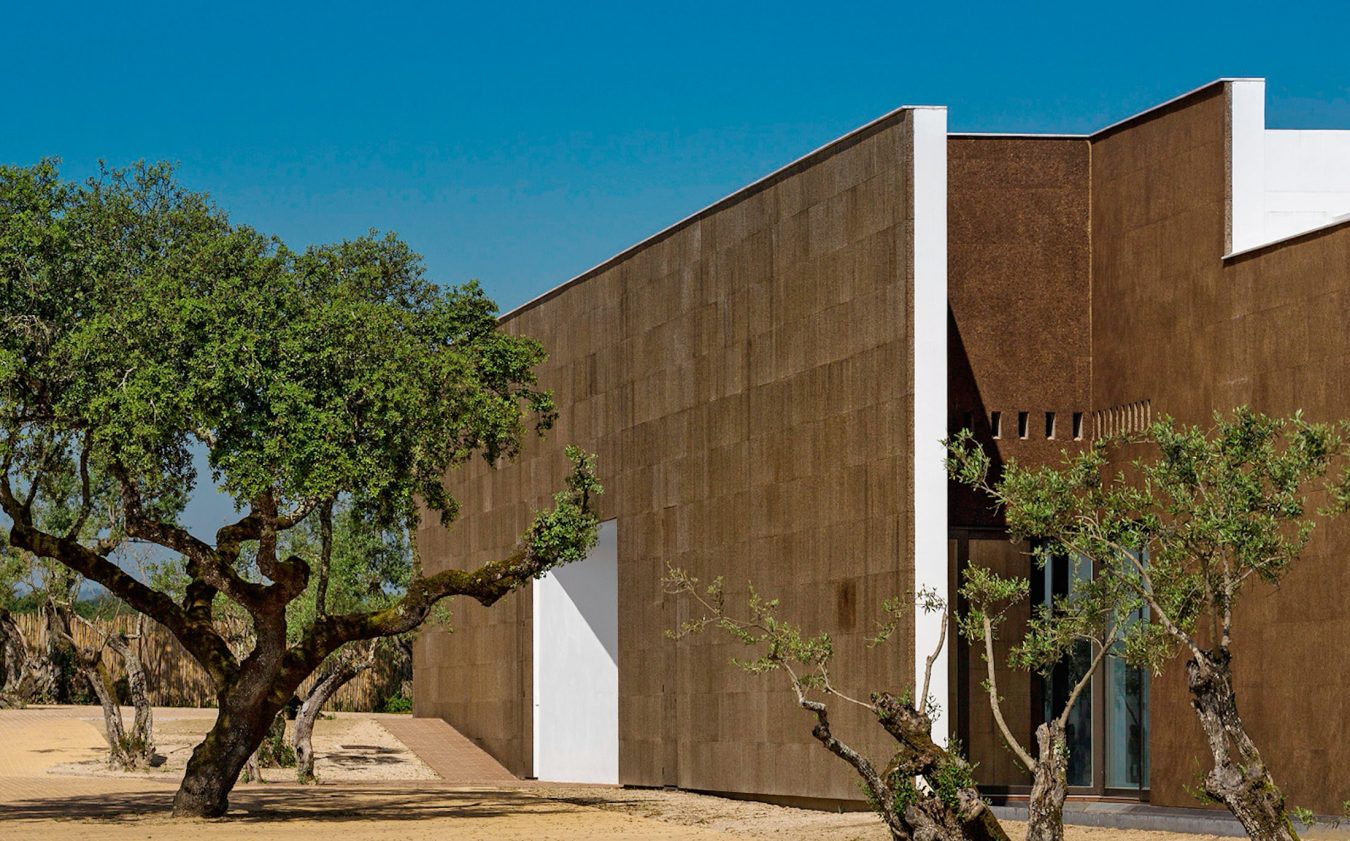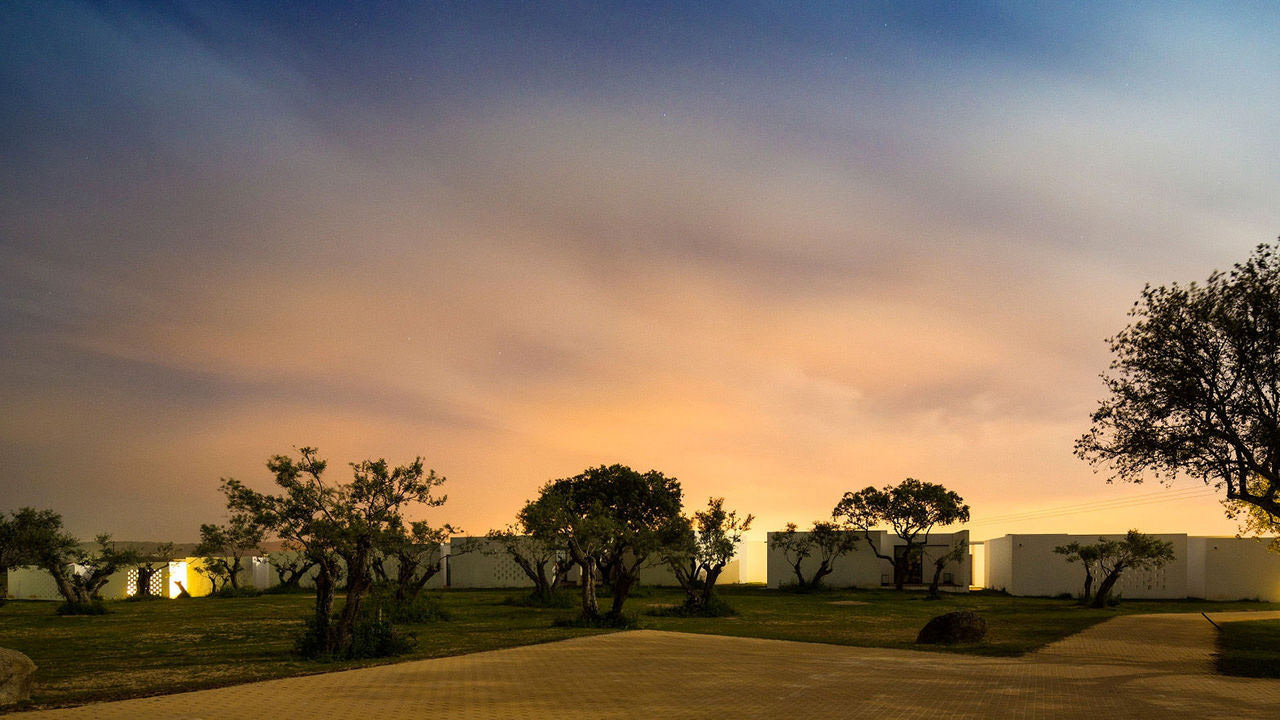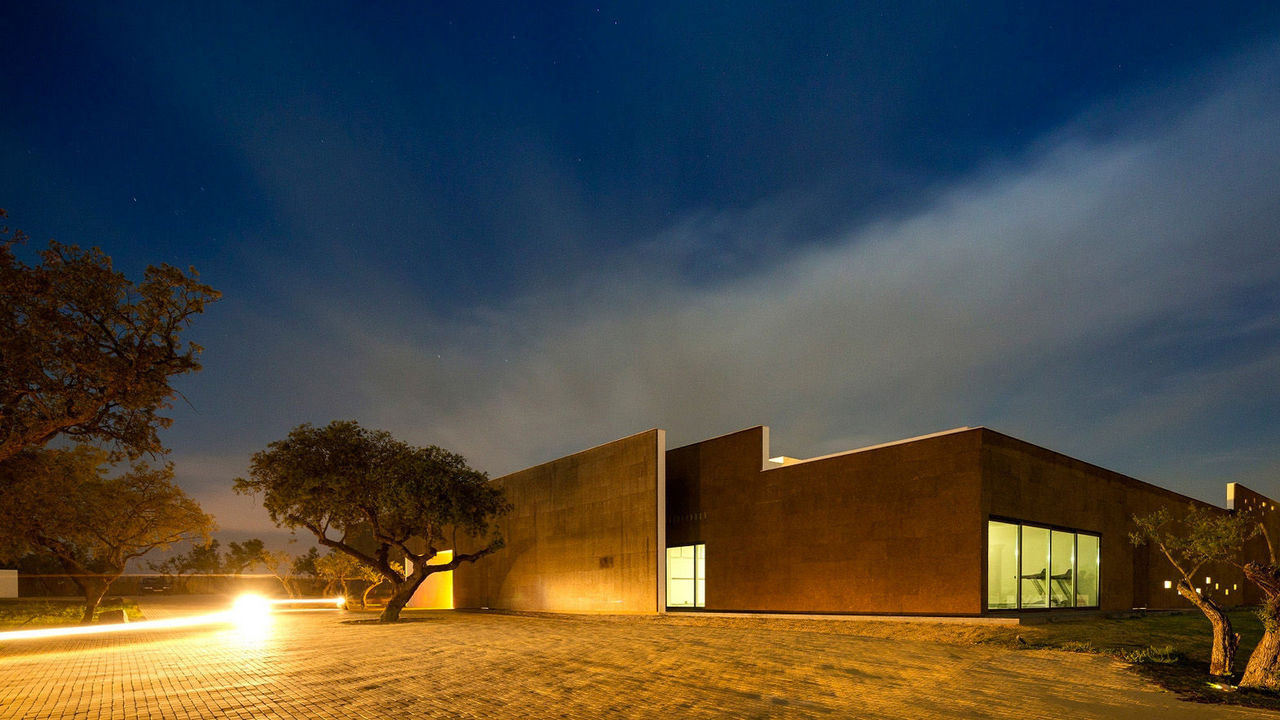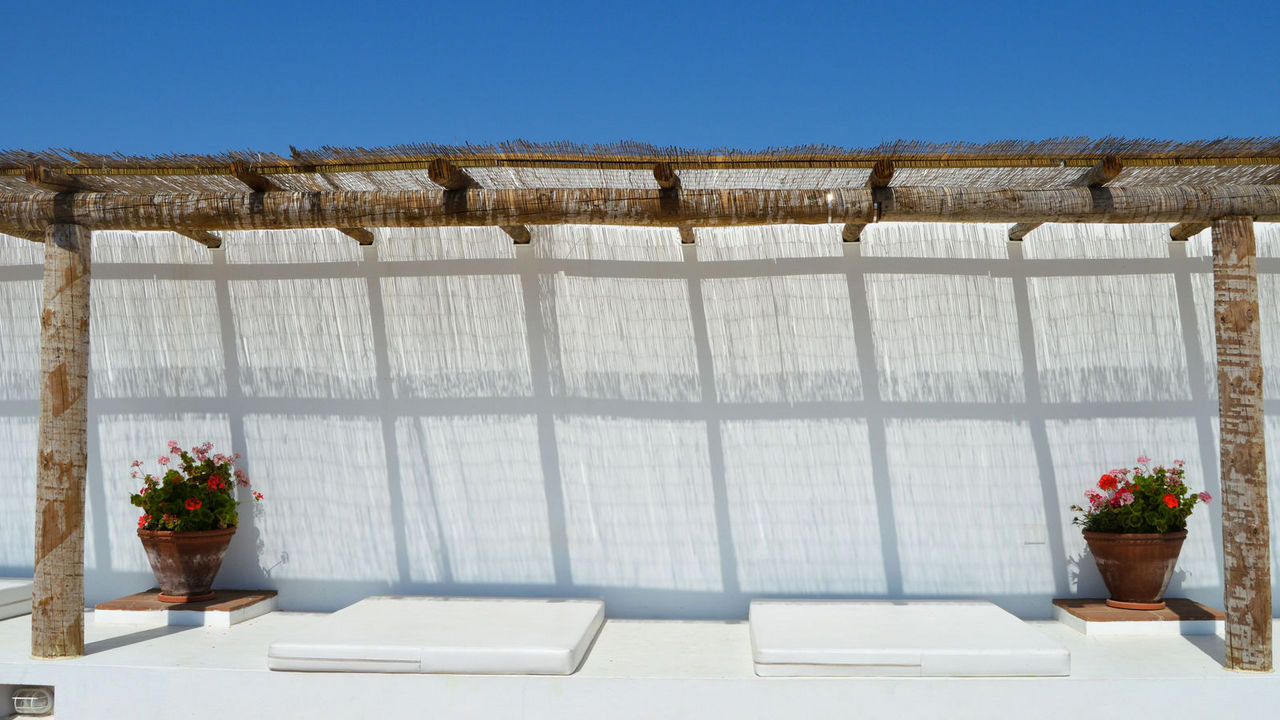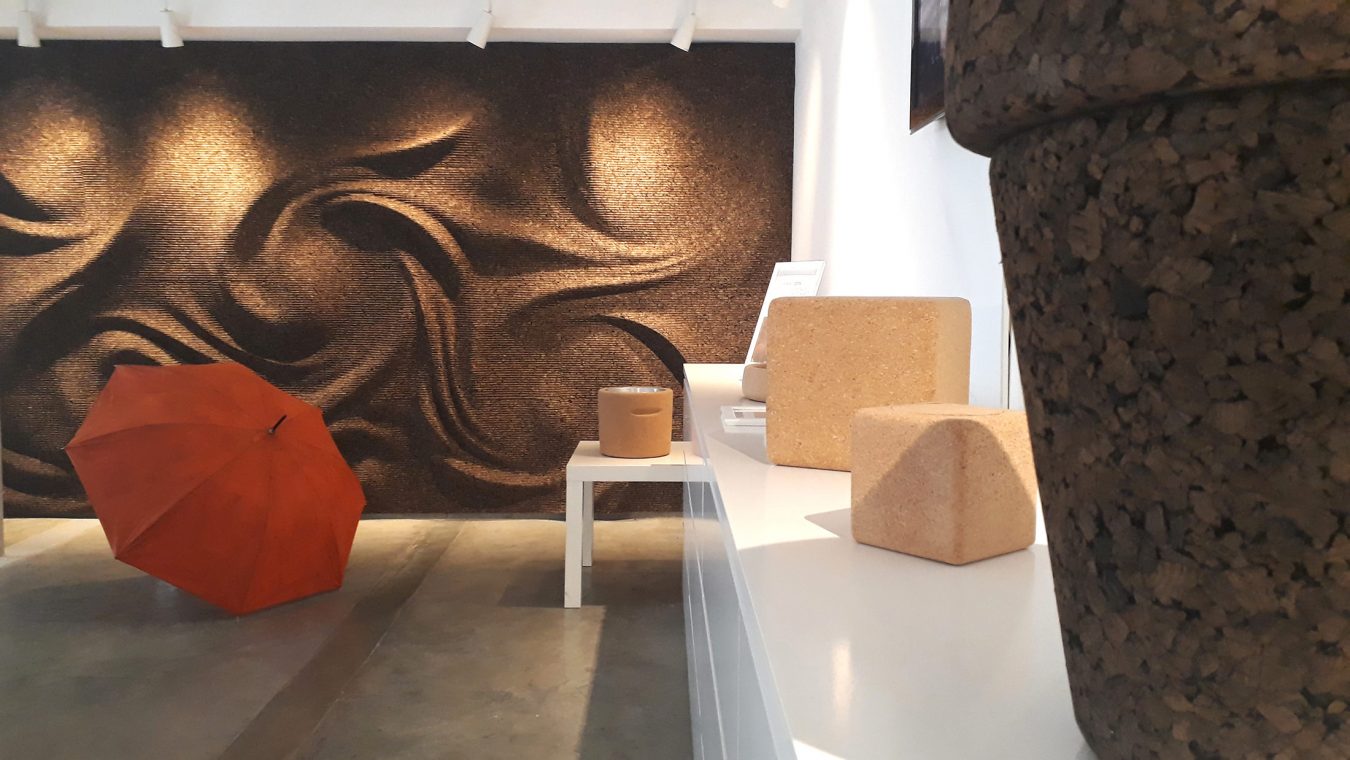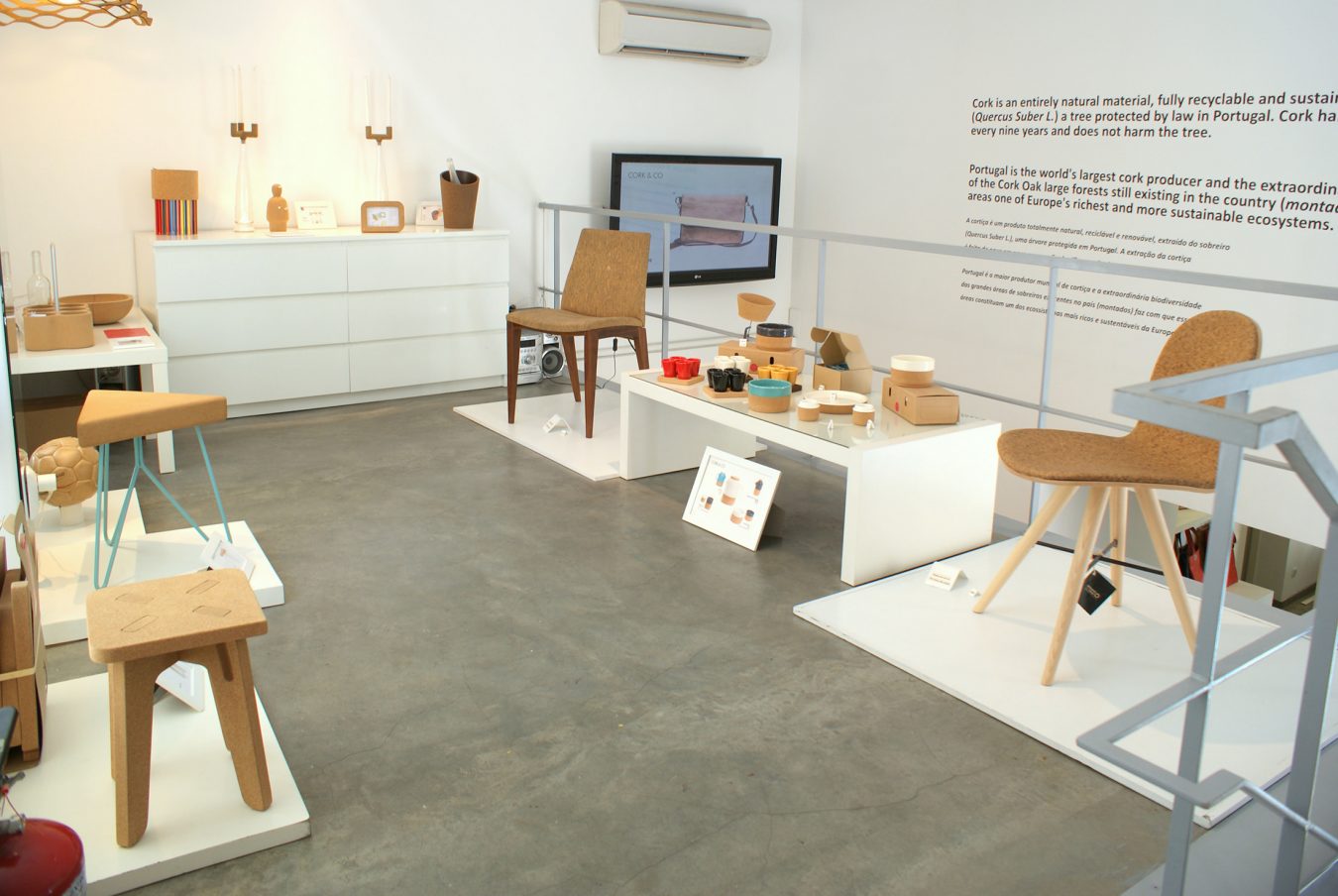Alentejo, Portugal’s sun-drenched southern wine region, was once overlooked by the throngs of international tourists who flocked to the mega-resorts of the country’s Algarve beaches. But in recent years, Alentejo and its central city of Evora have emerged as a preferred destination, offering a nearly frozen-in-time rustic escape from the bustling capital just an hour’s drive away.
In addition to finely aged wines and culinary delicacies, another Alentejo local wonder—cork bark—has surfaced. The humble material once more commonly connoting wine stoppers and bulletin boards is now forging forward into the realms of contemporary architecture and design, and, in the process, is reinventing the Portuguese aesthetic.
Evora’s Ecorkhotel is a testament to cork’s vibrant renaissance. Pulling into the resort’s gravel road means passing vineyards, roaming black pigs, and noble olive and cork trees, all of which exude a quiet kind of harmony between building, guests, and nature. The hotel was designed by Portuguese architect Jose Carlos Cruz and his son Antonio. Its central cork-clad building and surrounding cluster of white-washed bungalows nod to the traditional medieval village layout, in which a stone-walled castle was typically set as the focal point of small village residences.
“Historically, in regions in Portugal like Alentejo, there was always a use of natural materials,” explains Antonio, adding that cork’s easy application, extraordinary durability, capacity for acoustic and thermal insulation, and reasonable price solve numerous practical structural issues that, in turn, allow him to focus on design.
Cork is imbued everywhere in the Ecorkhotel. The restaurant has a raw cork accent wall that juts out in layered, soft angles; cork is also mixed in with the white paint that coats the villas, protecting guests from the scorching Mediterranean sun that can hover above 40 degrees in the summer months.
Many see the material’s modern revival as beginning during the 2010 to 2014 Portuguese economic crisis. Austerity measures forced architects and designers to tighten their belts and look inward, toward home, for inspiration. Jose Carlos Cruz faced a slashed budget at the Ecorkhotel—but luckily, he remembered a project in the 2000 Hannover Expo by the Portuguese architectural giants Siza Vieira and Souto de Moura. Their high-density cork board facades enveloping bold, boxy prefabricated exhibition spaces were believed to be the first such use of the material.
Cork’s rise as an eco-friendly, completely recyclable building alternative only continues to grow as the world wakes up to global development and its devastating environmental impacts. In an interview with the Portuguese Cork Association, Jordi Bonet i Armengol, the Spanish architect heading the reconstruction of Antoni Gaudí’s Sagrada Familia in Barcelona, said “one of the greatest problems of the modern world is that we use too much energy, and to get that energy we continue to harm the atmosphere, making it almost unbreathable.” Because Sagrada Familia is subject to millions of tourists every year, Armengol installed sepia-toned Portuguese cork floorings to keep temperature and noise pollution at bay. He said the cork preserved the architectural philosophy practiced by Gaudí himself, “who always used fundamentally natural materials and took inspiration from nature.”
With every high-profile project, craftsmen and designers experimenting with cork are liberating it from its modest beginnings. But they are also turning back to a millennia-old tradition. Archeological artifacts show that ancient Greeks used cork in design and revered the brown bark so dearly that only priests were allowed to harvest or peel the trees. In modern times, American architect Frank Lloyd Wright used hand-waxed cork tiles in his famous Fallingwater estate, and the Italian designer Salvatore Ferragamo crafted a cork-suede “rainbow” wedge for Judy Garland before the release of The Wizard of Oz.
Today, designers are picking up where their predecessors left off, and with the help of cork, are leading the worldwide movement of natural, locally-sourced living. “The crisis had triggered a different definition of what luxury really is. It was suddenly less about showing off a two-foot logo of a brand and a lot more knowing about, for example, where did the threads of this scarf come from,” says Carlos de Jesus, the communications director of Amorim, the largest cork company in the world that counts NASA among its international clients. “Cork checks all the right boxes: quality, origins, and environmental concerns.”
Portugal, a tiny and land-resource-scarce country, produces more than half of the world’s cork and boasts approximately 730,000 hectares of cork forest. These biodiverse sites, most of which are located in the central and southern regions, are the Portuguese equivalent of the Amazon, culturally significant in both language and folklore. Their protection is enshrined in Portuguese conservation law.
Cork trees are only harvested some 20 years after they are first planted, in line with an ancient form of Portuguese agro-foresting known as montado. Farmers shave the bark off the tree (leaving a raw red trunk) only about every decade, when the plant is able to replenish its protective layer. In many cases, the cultivation process spans generations, making legacy cork farming one of the last remaining natural, high-skilled, highly-paid forms of forestry in the western world.
Cristina Salgado, a former lawyer who now runs the Lisbon interior design store Cork and Company, credits cork with providing a culturally-respectful way for Portugal to enter the global economy. In 2011, as Europe spiralled into double-digits unemployment, she recruited local designers and craftsmen to create cork products ranging from chairs to bowties to umbrellas. They learned that the material was water-resistant, highly durable, and highly conducive to experimentation. Since then, she says, “the cork idea has been spreading, in ways you can’t imagine.” She now has her sights set on the U.S.—the next frontier, she says, after her company found success throughout Japan.
Like her Age of Discovery forefathers and the Portuguese explorer Vasco da Gama, Salgado says that cork has allowed her to connect with both the world and her own heritage. “People appreciate buying something local, wherever that is,” she says. “That is because cork’s beauty really goes with anything.”
UPDATE, September 2018: the Ecorkhotel is turning into a Tivoli Hotels & Resorts property.
For more in-depth Design, click here.

